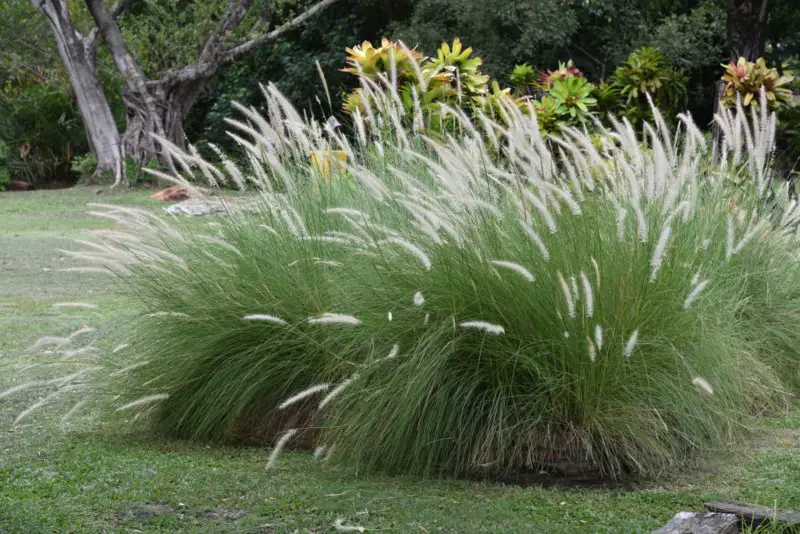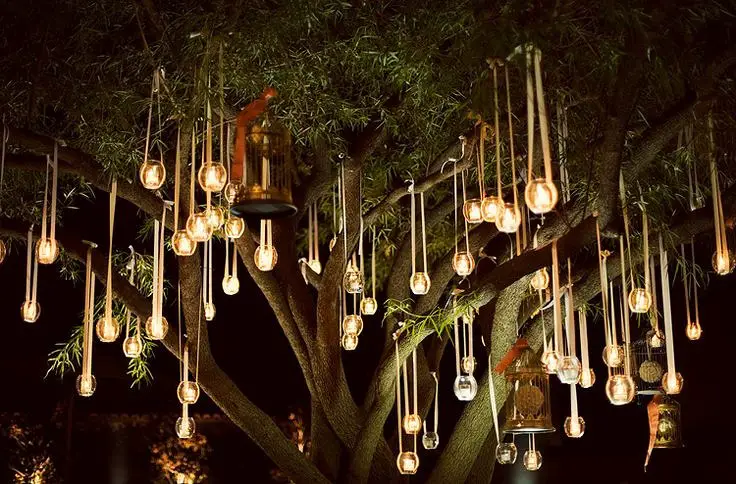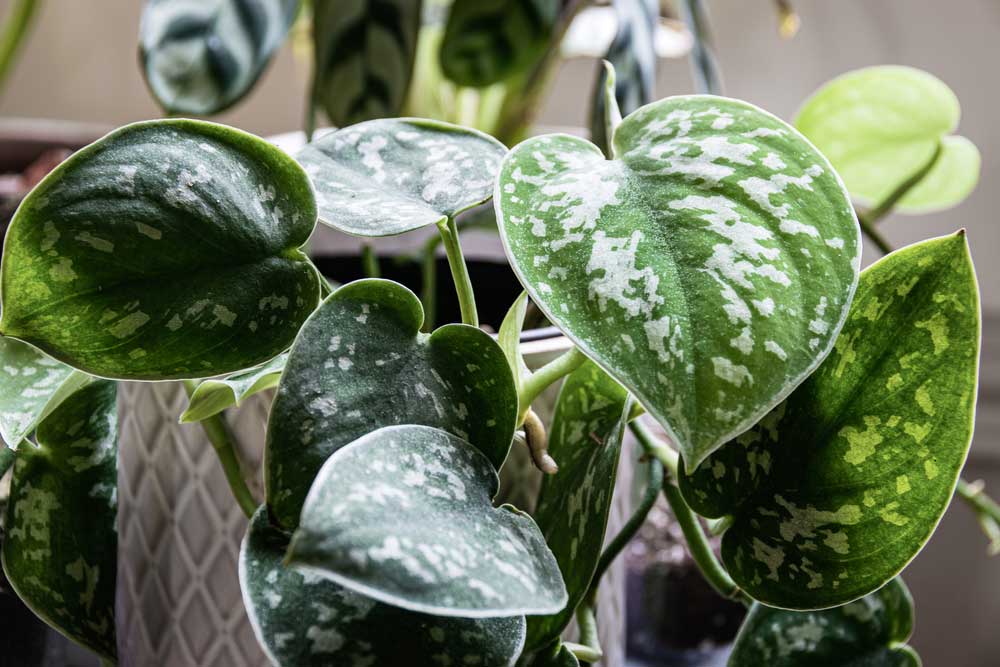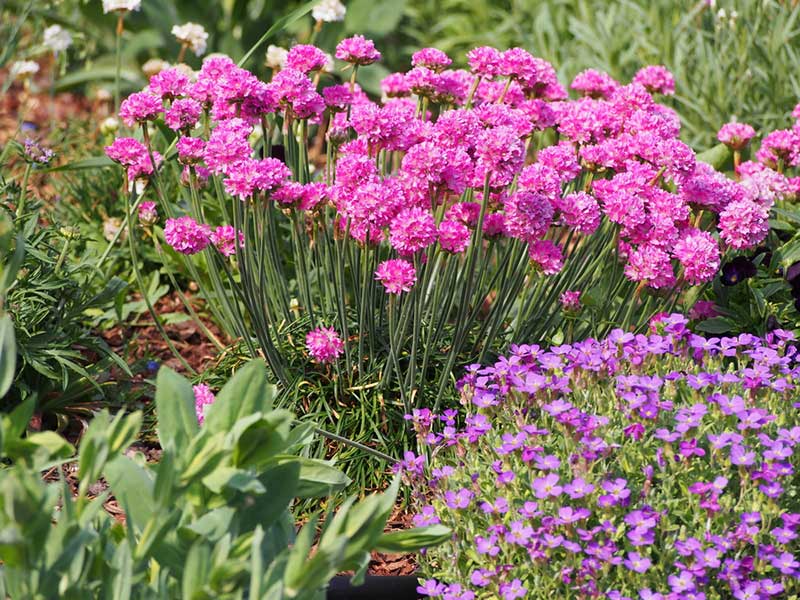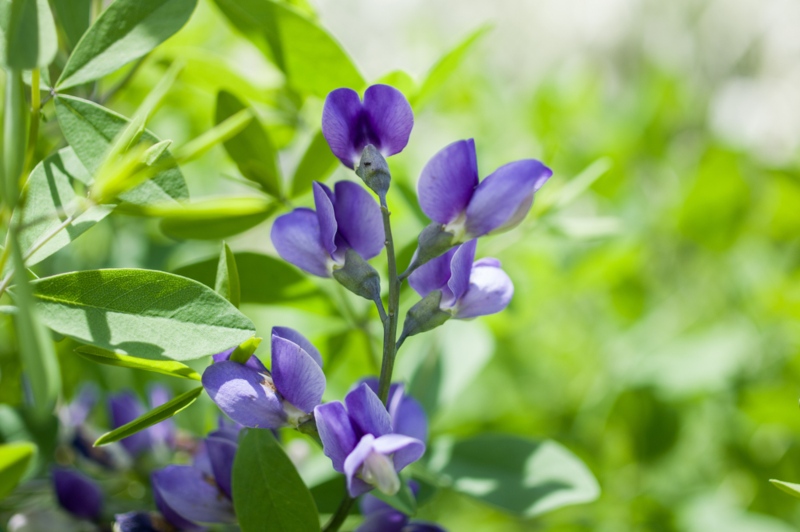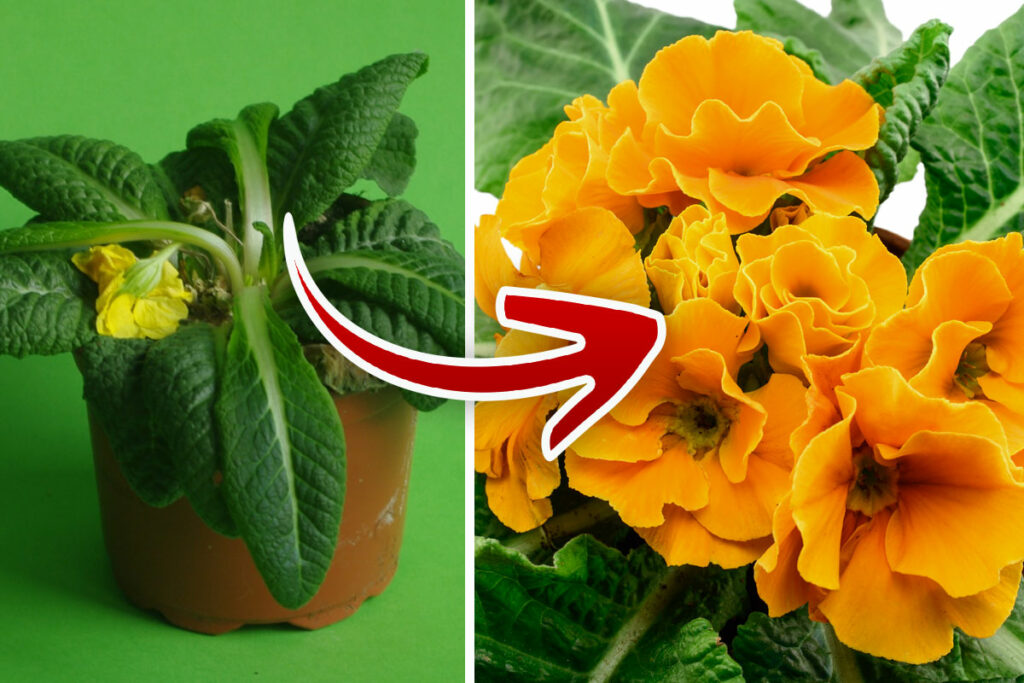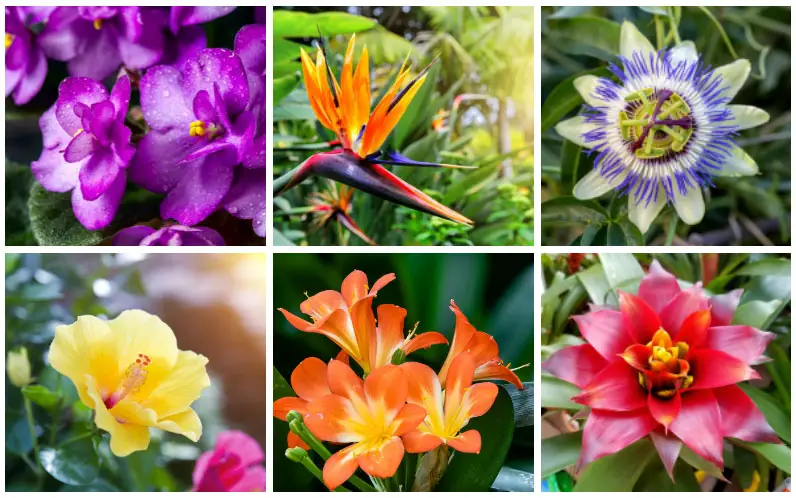
As the name suggests, tropical plants do best in a tropical climate. Therefore, you may want to consider growing many of these plants as beautiful houseplants or putting them outside only when temperatures stay above 50 degrees at night.
Keep in mind that most tropical plants love a very humid environment, so you need to take steps to provide it for them.
Many of these plants originate near the equator, so you are striving to provide the conditions that are like those found in that environment.
African Violet (Saintpaulia)
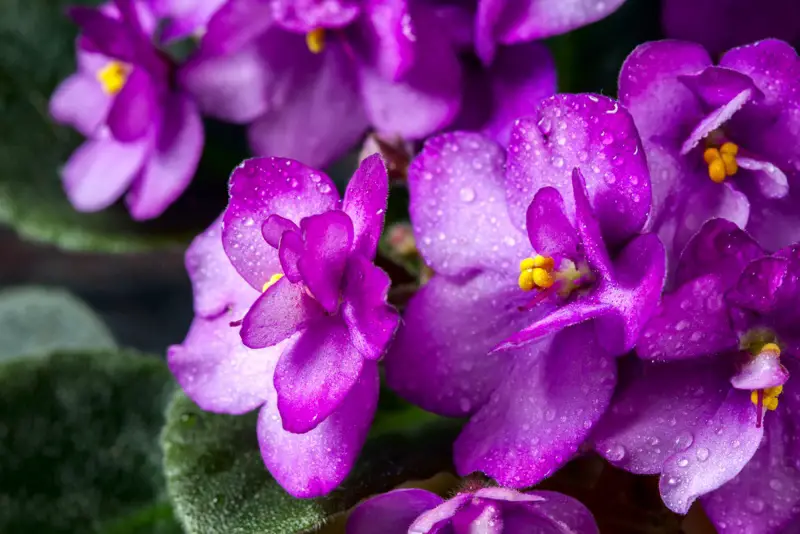
You can grow African Violets indoors or outside if you live in zones 11 or 12. They prefer part-to-full shade. These plants that grow to be between 6-and-9-inches tall bloom abundantly, and you can find a variety of color options, including blue, pink, purple, and white. This plant loves a humid environment, so if you are growing it inside, place a small platter of gravel and rocks under it.
For more information on growing these beauties, see our tips for growing African Violets.
Hibiscus

Hibiscuses will grow up to 4-feet-tall in zones 5 to 9 if they have deep and consistent water. Each woody stalk puts on a disc-shaped flower that can be up to 10-inches across. Each flower consists of five petals, with each petal being up to 4-inches-long. While each flower blooms for only one day, the plant will continue to produce new flowers from July to September.
Hibiscus Tree Care: Complete Guide on Growing Hibiscus
Amaryllis
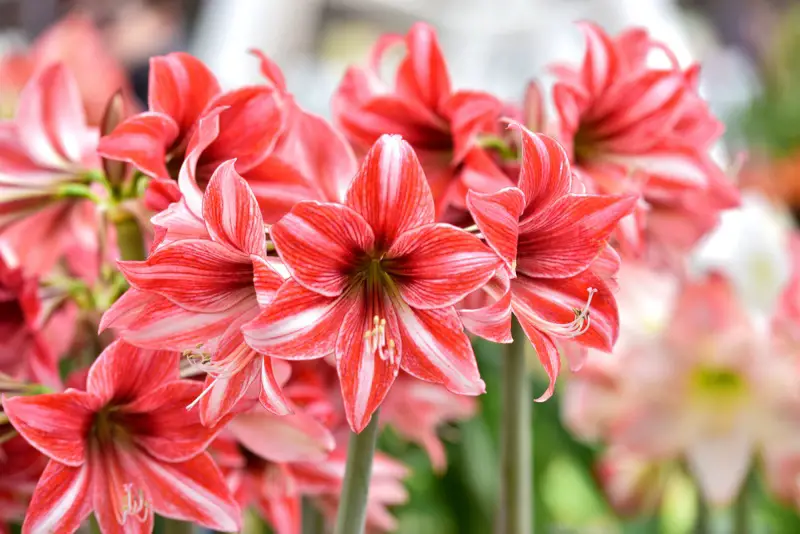
Amaryllises are plants that grow to be about 12-inches-tall in zones 8 to 10, or they make beautiful houseplants. It is common to plant bulbs in pots at Thanksgiving, and they will bloom by Christmas. They can be grown in full sun to partial shade. About the time that the flower blooms, it starts to produce large leaves.
Bougainvillea
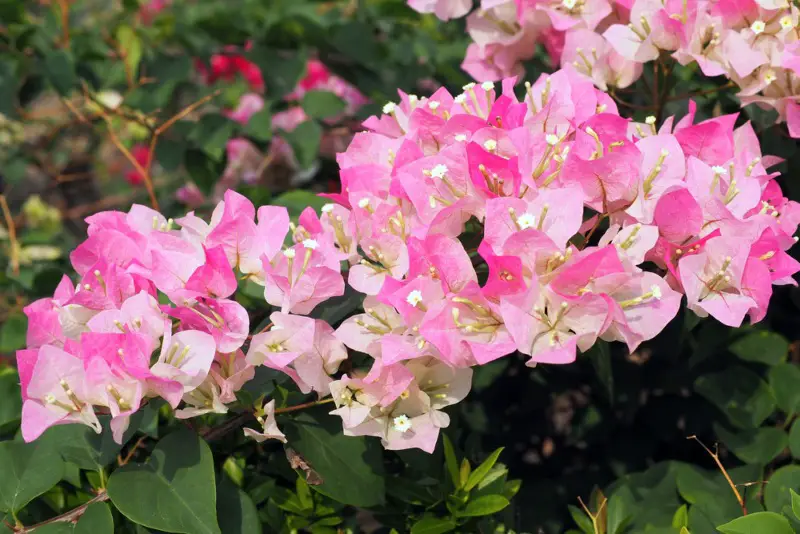
Bougainvillea can grow up to 40-feet-tall and 40-feet-wide when planted outside in zones 9 to 11. Brightly colored bracts tend to hide the one-to-three flowers that this plant puts on. The bracts appear as brightly colored leaves. In colder areas, this plant is often grown in the summer in hanging baskets.
Anthurium
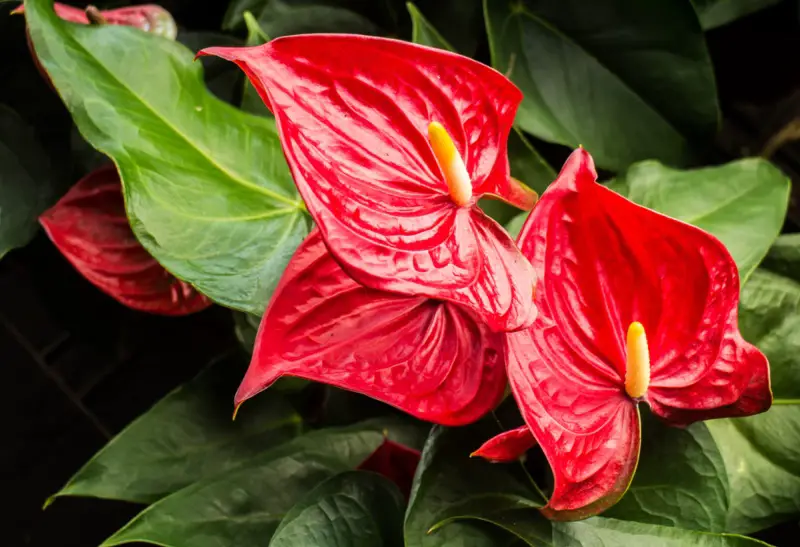
Anthuriums grow to be about 12-inches high in zones 11 and 12. Waxy, palette-shaped, bright red spathes give this plant its nickname painter’s palette. These spathes appear in stark contrast to the dark green, heart-shaped leaves that grow in a clump from this plant’s center. It will put on long-lasting flowers throughout the year.
Bird of Paradise
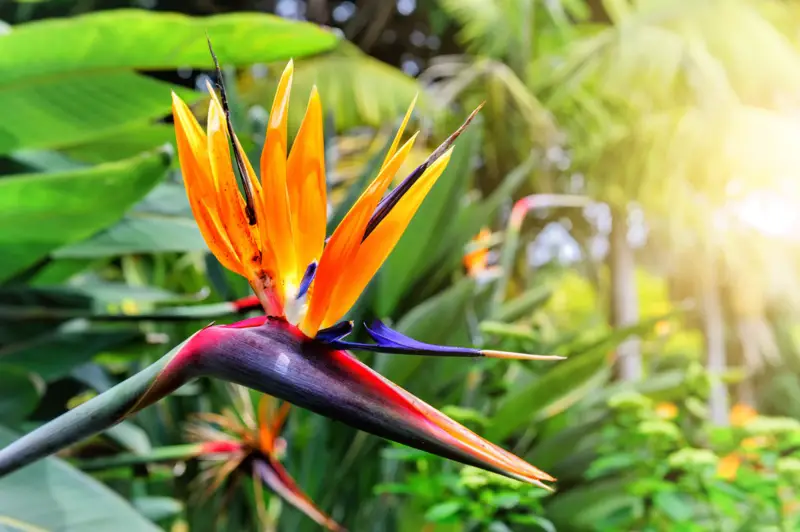
Bird of Paradise plants can grow in zones 10 to 12 or inside as a houseplant. This plant that will grow to be about 4-feet-tall in ideal conditions loves fertile loamy soil. It needs at least four hours of sunlight daily. The spathe on this plant forms inside a hard shell that looks like a bird’s beak. Then, when the spathe is mature, it forms a right angle with the plant’s stem. The nectar-rich flowers on this plant consist of three orange sepals and three bright-blue petals.
Clivia
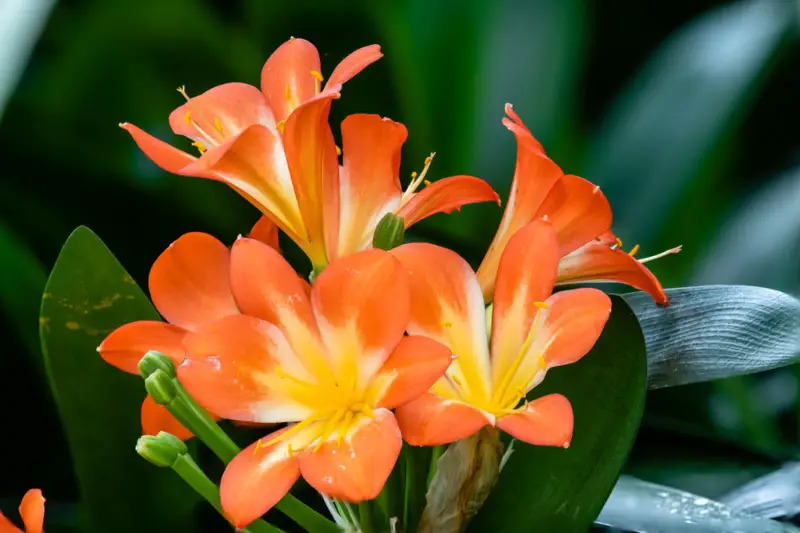
Clivia grows well in zones 9 to 11, and it also flourishes as a houseplant. This plant that grows up to 24-inches tall forms a clump that can be up to 36-inches wide. Large funnel-shaped flowers in shades of yellow, orange and red appear at the top of strong flower stems. Most flowers will not appear on this plant that blooms from December to April until the third year. This plant that loves the shade also strappy leaves.
Cyclamen
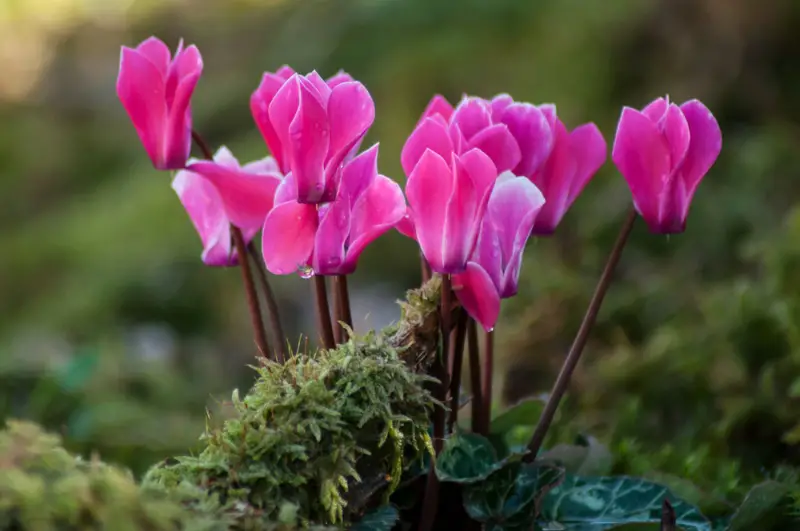
Cyclamen is a beautiful plant that thrives in zones 9 to 11. If you are growing this option from seed, you will need to wait about 18 months for the first blooms to appear. This plant blooms from November to March in beautiful shades of pink, white, and lavender. There are two different groups of cyclamens, with some growing to be about 9-inches tall and others barely reaching 6-inches tall. The shorter variety requires less water than the taller one.
Larkspur Delphinium
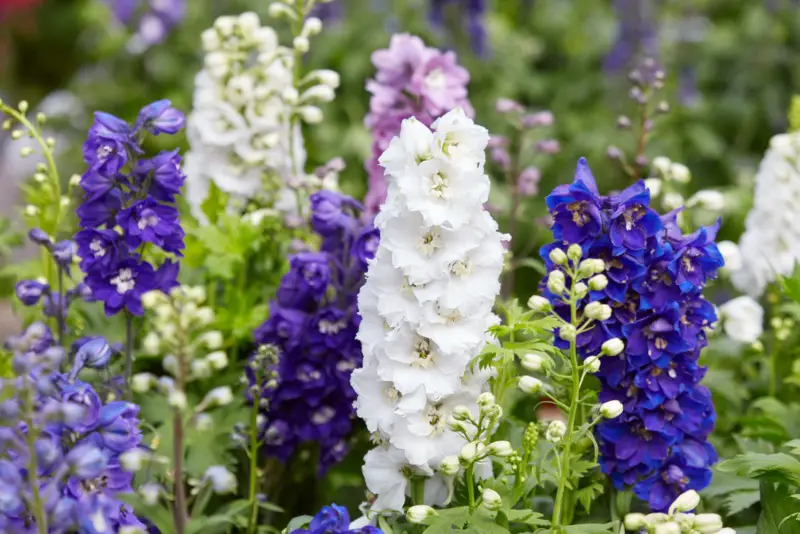
Larkspur delphinium thrives in zones 5 to 7 where it grows to be about 6-feet tall. This sun-loving plant produces blue complex asymmetrical flowers that can be up to 1-inch in diameter in the late summer and early fall. The abundant dark green foliage sets this option apart from other larkspurs.
Morning Glory
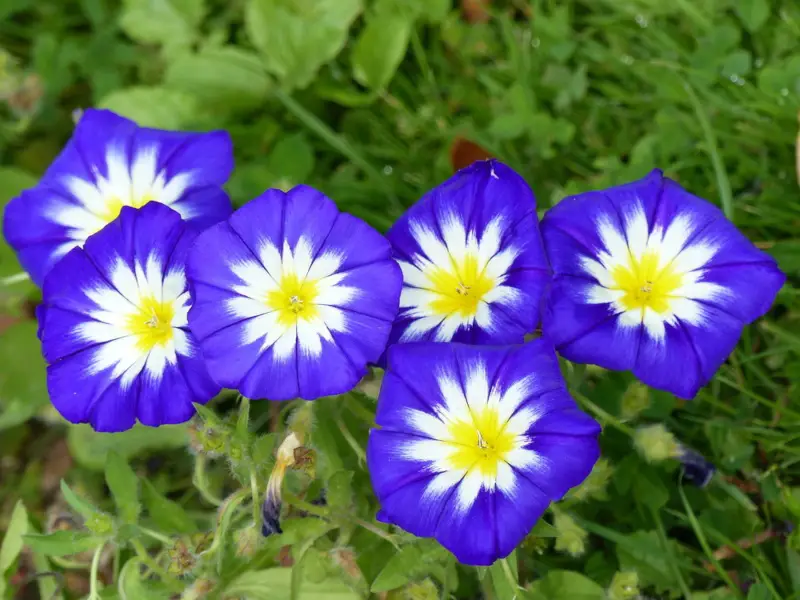
You will love watching this plant shoot into the air because it can grow up to 10-feet tall in one season in zones 2 to 11. In the late spring, this plant will put on trumpet-shaped flowers that are attractive to butterflies and hummingbirds. The flowers open in the morning and close at night. This sun-loving plant requires a medium amount of water to keep blooming from June to October. Check out the different types of Morning Glory!
Blanket Flowers (Gaillardia)
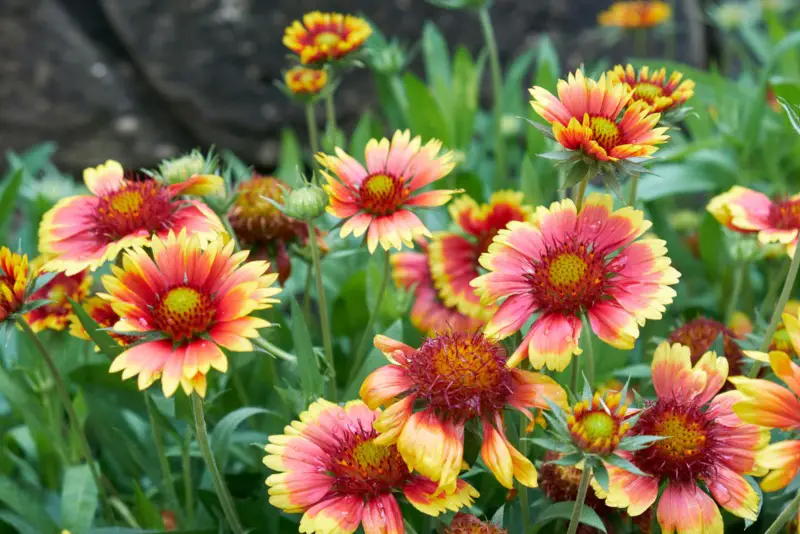
Growing in zones 3 to 10, blanket flowers love the sun, but it does not like wet feet. When you provide the ideal conditions for it, you will be rewarded with breathtaking flowers from June to September. Each flower consists of many rays with most verities featuring a shade of yellow. The ends of the rays usually feature a coordinating color band. The rays surround a center cone that is often orange to light brown.
Blood Lily
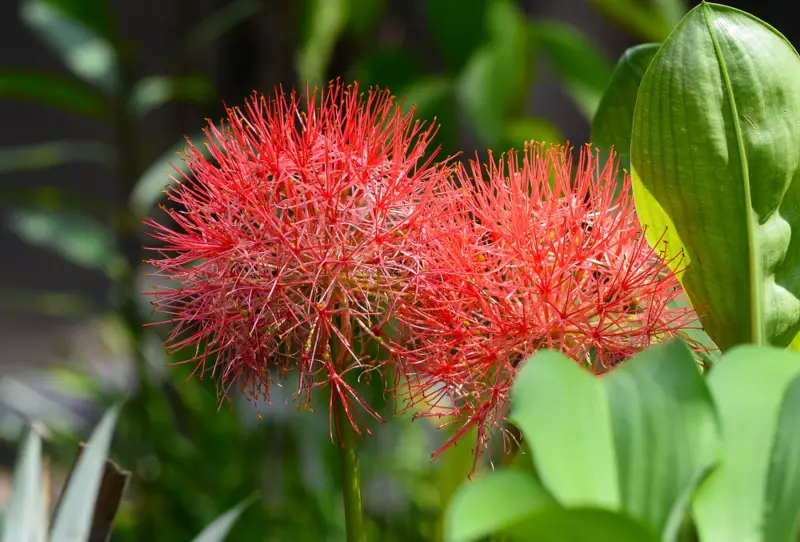
Growing in zones 9 to 11, the blood lily produces its unique blooms in June and July at the terminal end of stems that grow to be about 15-inches tall. Its flowerhead consists of hundreds of densely packed red florets that have yellow stamens. Each flowerhead can be up to 6-inches in diameter. This plant needs at least four hours of sunlight daily and requires regular watering.
Blue Passion Flower
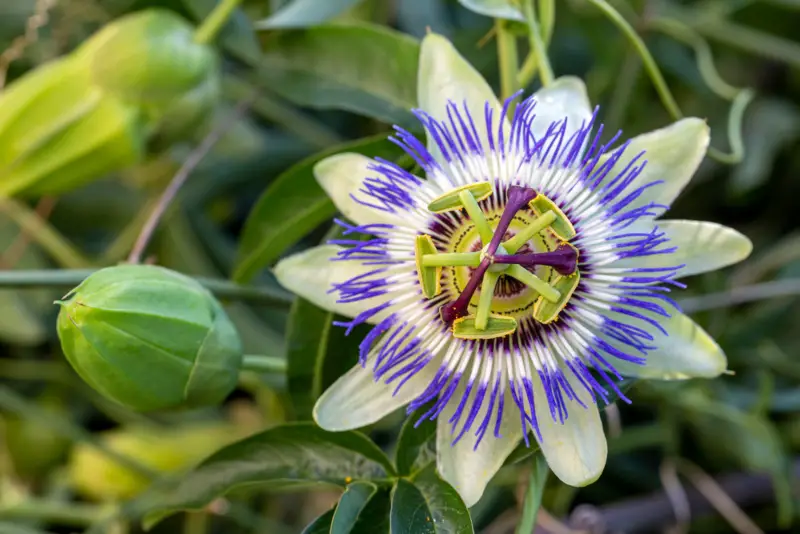
Plant the blue passionflower in loose sand or gravely soil and watch it grow to be up to 25-feet tall. It thrives in zones 7 to 9. If you give this option too many nutrients, it will put on lots of foliage, but you will be disappointed in the flowers. It also needs lots of humidity. The white and purplish-blue flowers appear in late summer. They are followed by orange seed heads that last through most of the fall.
Chrysanthemum
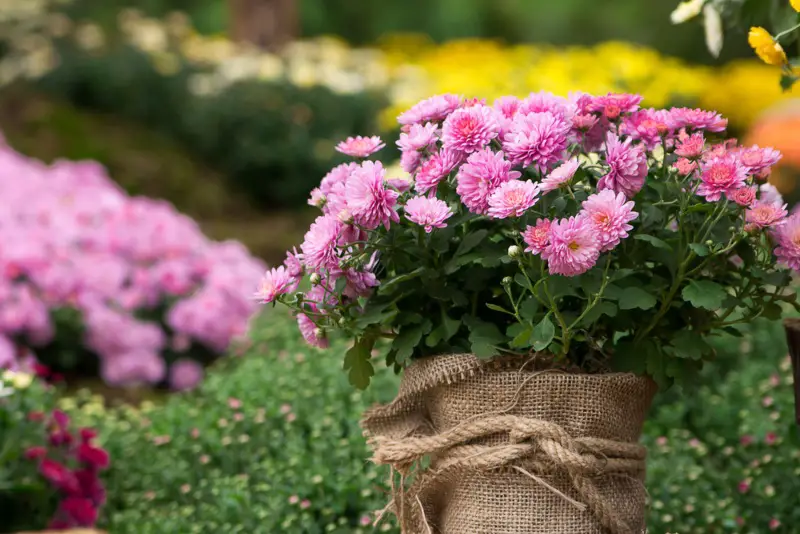
There are over 20 different species of chrysanthemums, so one or more may be right for you if you live in zones 5 to 9. These plants also make outstanding houseplants in many homes. They love the sun, so place them in a sunny location in your home or outside. Do not forget to water this plant that usually blooms from September until the first killing frost. They will bloom better if you pinch the vegetation back in late spring.
Plumeria Rubra
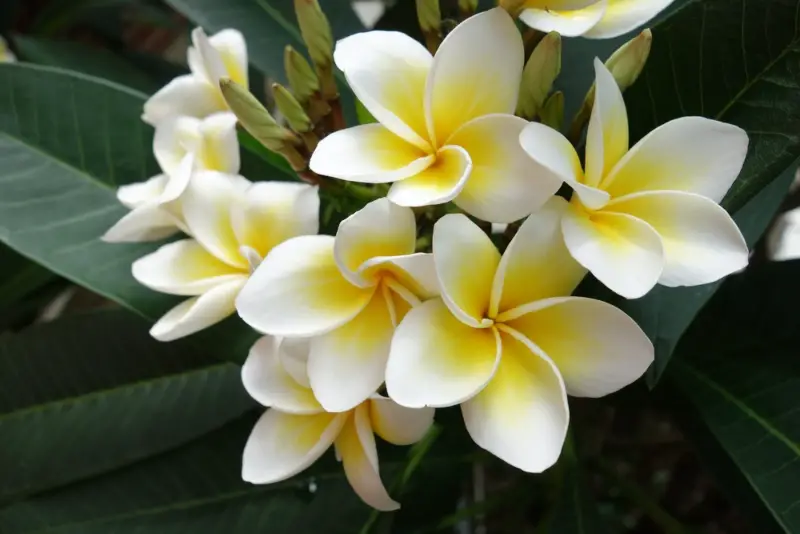
Plumeria rubra can grow up to 25-feet tall in zones 10 to 12. This sun-loving plant will spread about as wide as it is tall, so be sure you are giving it plenty of room to grow. The five-petal flowers on this choice can be up to 4-inches across and appear in late spring. They will last until fall. This plant is continually thirsty, so give it plenty of water.
Bromeliads
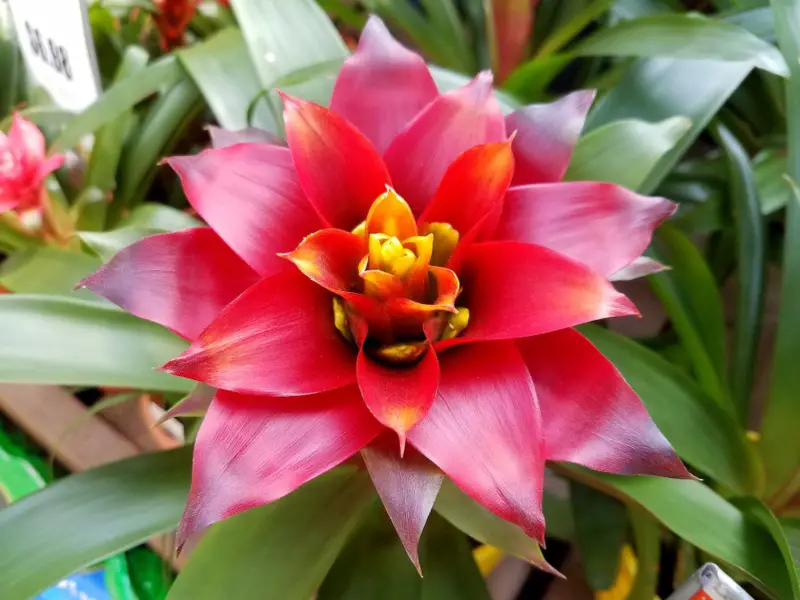
Unless you live in zones 11 and 12, you will want to grow bromeliads in pots so that you can bring them inside in the winter. There are over 2,800 choices, including the pineapple, so you can find one that you adore. Some bromeliads must live next to a tree while others need to live on a rock. You can also find options that live in soil, and these are usually the easiest to grow.
Chenille
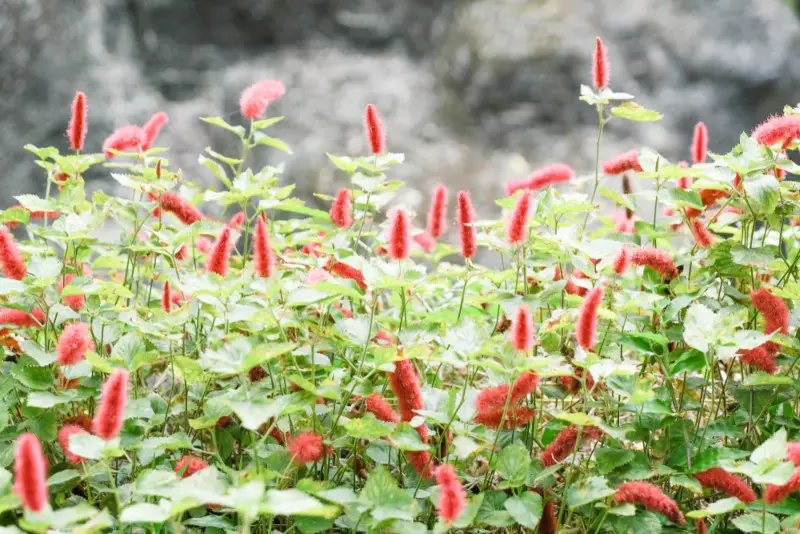
Chenilles may be a perfect choice if you have sandy or clay soil that is slightly alkaline. The abundant bright red flowers that grow in cattail-like pendent clusters make this a favorite of many gardeners for hanging baskets. Then, they take the baskets indoors when temperatures begin to dip. This plant can grow up to 6-feet tall and have an 8-foot spread when planted outdoors in zones 10 and 11.
Orchid
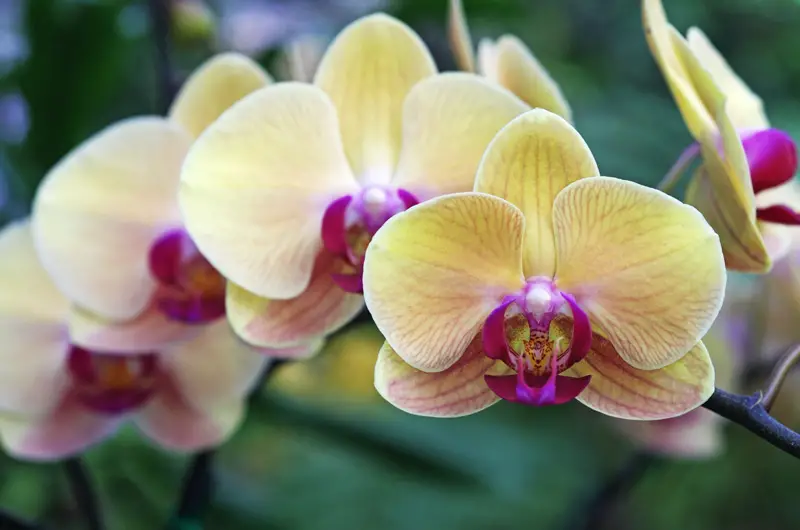
There are many different types of orchids available, so be sure to check for information specific to any orchid you are considering. Most grow best in carefully controlled conditions where temperatures stay between 75-and-85 degrees during the day and between 55-and-65 degrees at night. They love humidity that is kept around 65% all the time. Air needs to be able to circulate easily through the soil, so consider using a special planting soil, coarse redwood or fir bark.
Jasmine

You will love the sweet fragrance of jasmine. Its bright yellow flowers are a sure sign that spring has arrived. This plant can grow up to 15-feet tall in zones 6 to 10. You can choose to grow it as a vine where it often looks stunning, climbing a south-facing wall or as ground cover. This plant’s willowy green stems are evergreen.
Protea
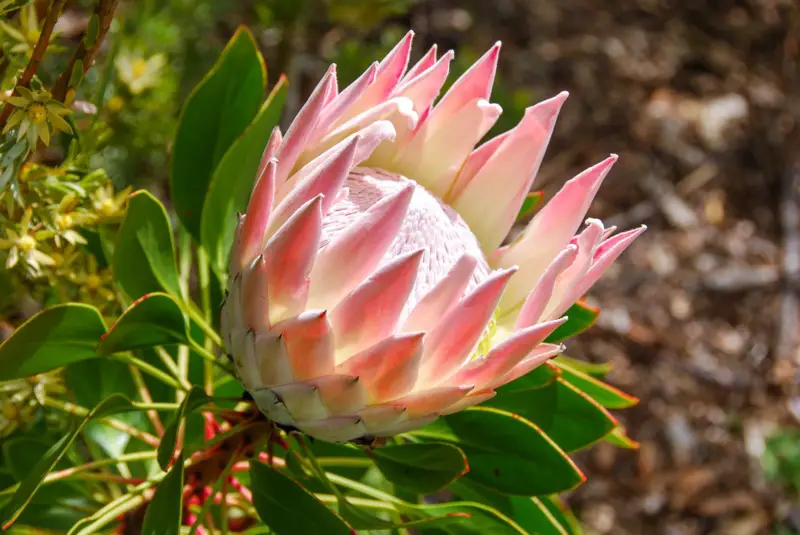
If you have a place that gets the sun at least a few hours each day, then a protea plant may be perfect if you live in zones 7 to 10. This plant loves to live in organically fertile soil, and it requires an average amount of water. It will quickly suffer from wind damage, so be sure to protect it. While there are several varieties, you will be rewarded with a late summer bloom that is a bright yellow to creamy white.
Medinilla
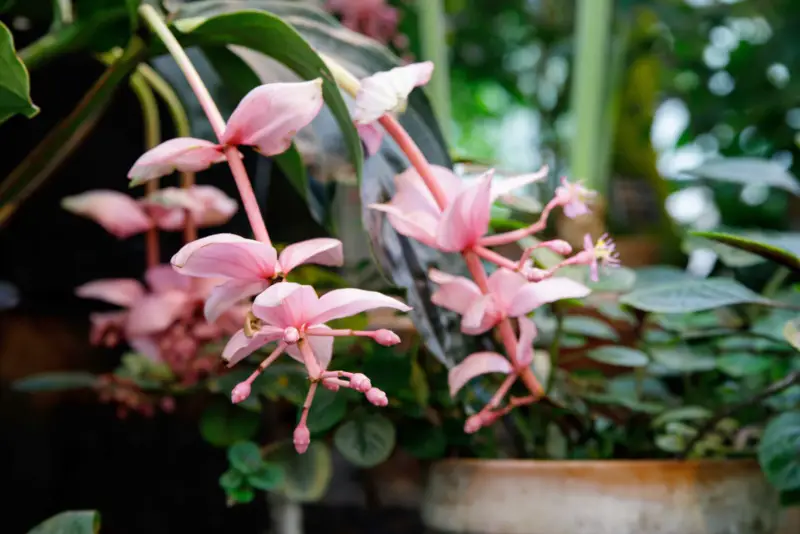
This showy plant needs protection from the hot afternoon sun. It loves to live in a greenhouse in colder climates, but it will thrive outside in zones 10 and 11. This plant cannot stand to have its feet wet, so plant it in loamy soil in an area that drains well. It will reward you with small pink to coral flowers that grow in clusters up to 18-inches long with showy pink bracts.
Penta
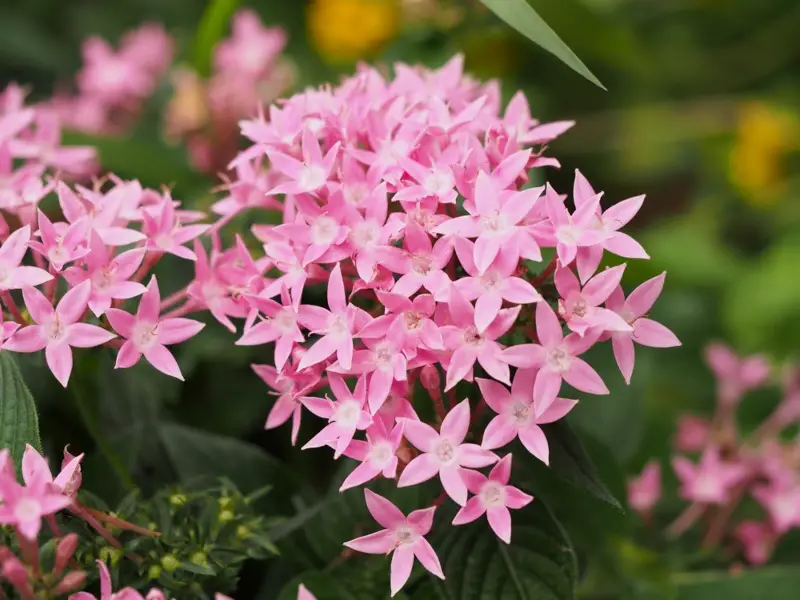
You can grow pentas in partial shade, but you will get the prettiest blooms when planting in full sun. These plants that grow well in zones 10 and 11 prefer to dry out a little between waterings. This plant that produces bountiful star-shaped flowers during the summer is available in many different colors.
Canna
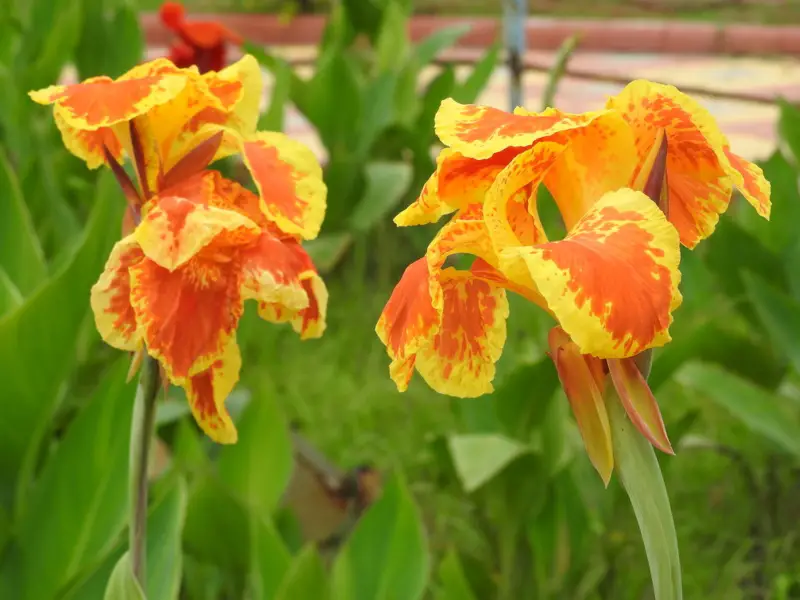
If you live in zones 7 to 10, then a canna may be the perfect specimen plant. Cut this plant back to the ground in the winter and bring the rhizomes inside in colder climates for the winter. You should also remove spent flowers to encourage new blooms throughout the growing season.
Salvia splendens
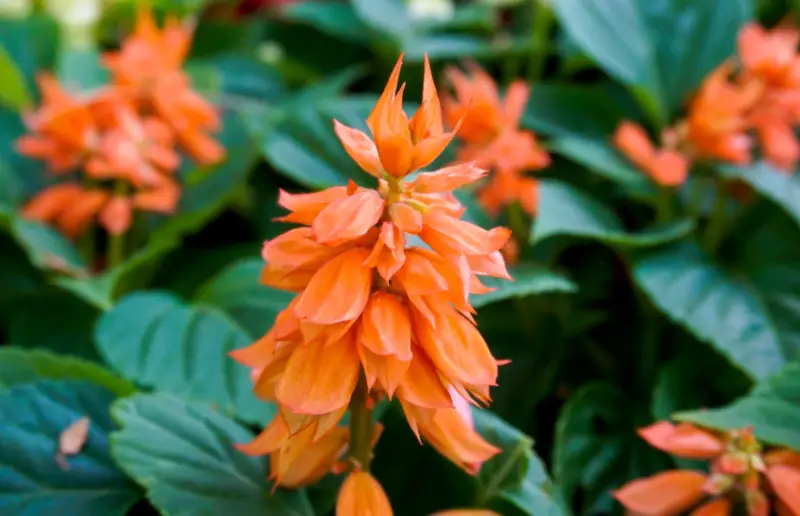
Salvia splendens is a clump-forming plant that grows up to 2-feet tall in zones 10 and 11. Its bright red flowers that appear from June to frost help attract butterflies to your landscaping. Red, pink, blue, lavender, orange, white and bicolor choices are available. You may also want to consider dwarf varieties if you have a smaller space.
Caladium
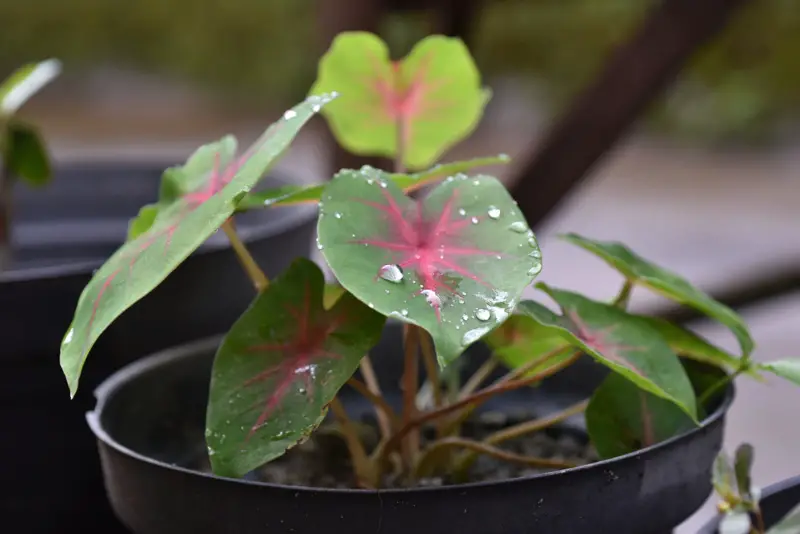
You will love the green variegated foliage on caladiums that is often described as looking like angel wings. This plant that thrives with regular fertilizer and good moisture in zones 10 to 11 can also be grown in a container. Not all caladiums will put on calla-type flowers, and they are usually hidden in the foliage.
Yucca elephantipes
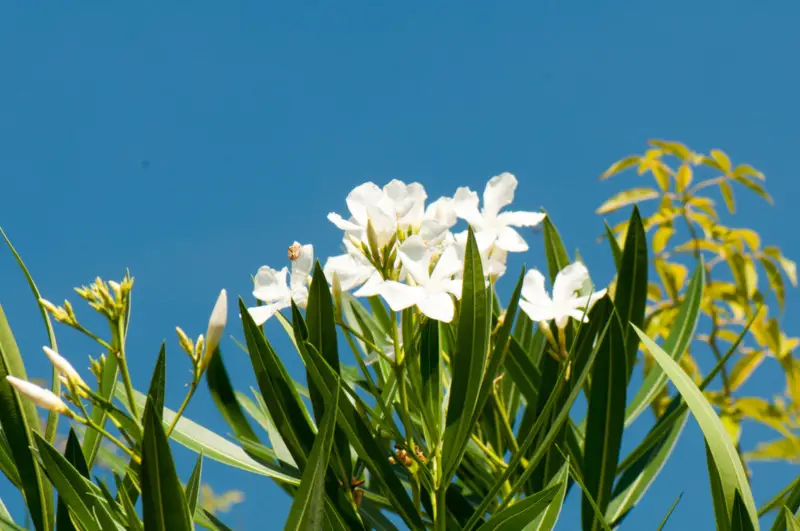
Yucca elephantipes is winter hardy in zones 10 and 11, and it can be grown as a container plant much further north. This plant prefers sandy soil, and it wants to dry out slightly between waterings. The bright green, sword-shaped leaves on this plant can grow to be over 4-feet long.
Angel’s Trumpet
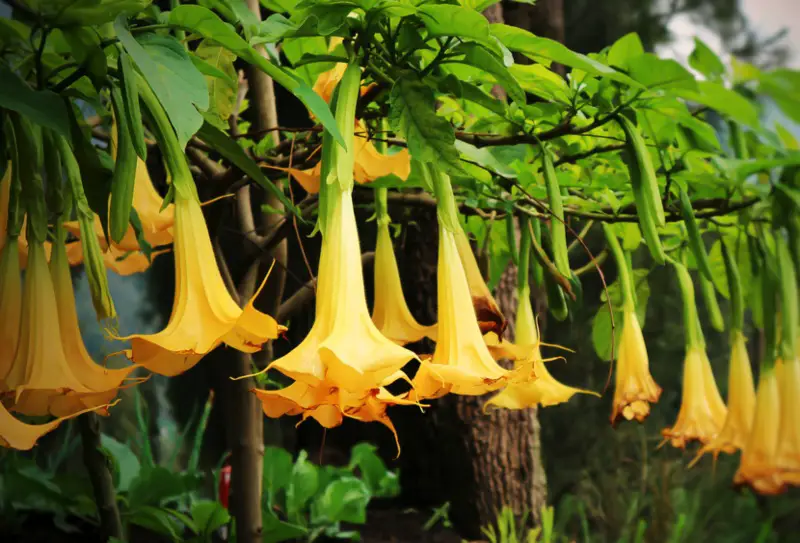
Angel’s trumpet is a broadleaf evergreen that loves the sun and well-drained soil. Many different hybrids are available growing to be between 5-and-10-feet tall. This plant gets its name from the sizeable trumpet-shaped flower that can be up to 12-inches long, which appears mid-summer. Caterpillars and spider mites can be a problem, especially if you choose to overwinter this plant that can be left in the ground in zones 8 to 10.
Begonia
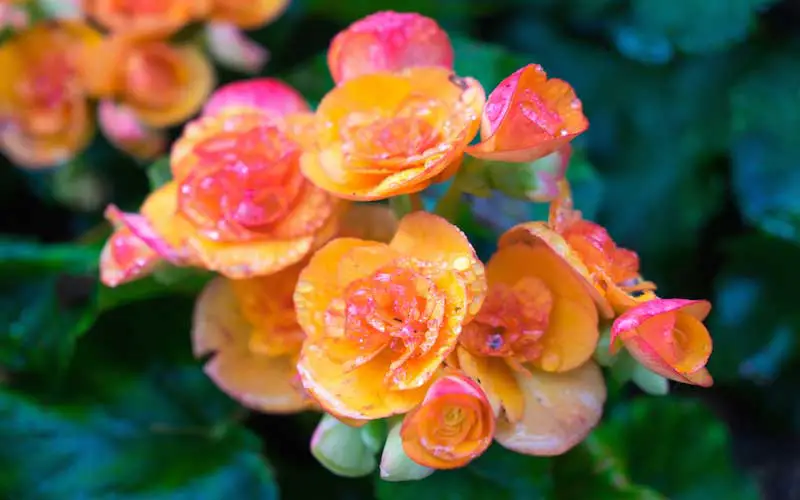
A longtime favorite of many gardeners, there are over 150 species of begonias with most being grown as annuals, but they can be grown as perennials in zones 10 and 11. You can find these plants that love to be consistently moist in a variety of different colors. During the warmer months, mulch around these plants to protect the roots from getting too warm.
Goldfish plant (Columnea gloriosa ‘Purpurea’)
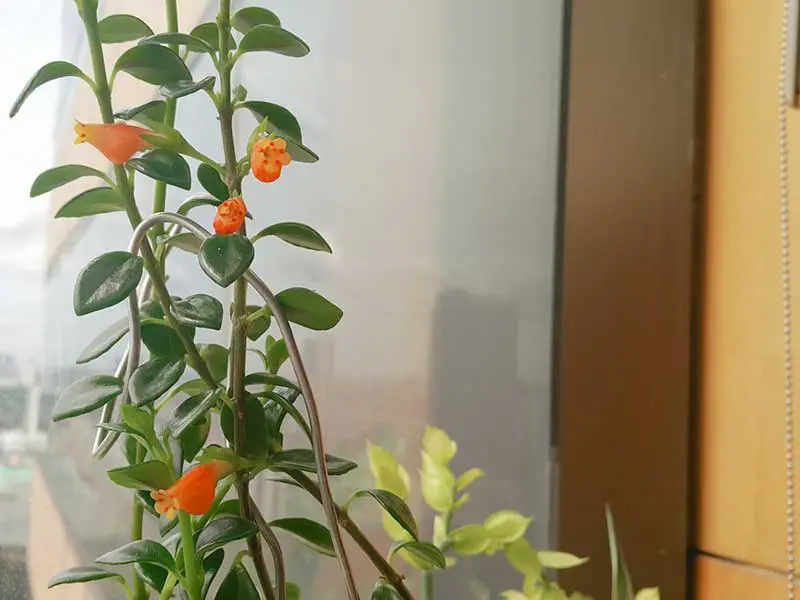
While you can grow goldfish plants outside in zones 10 and 11, most are grown as houseplants. Keep the soil evenly moist to encourage growth. This plant prefers irregular waterings when it is not growing, but it does want a very humid environment throughout the year. Consider growing goldfish plants in a hanging basket to encourage growth.
Gardenia
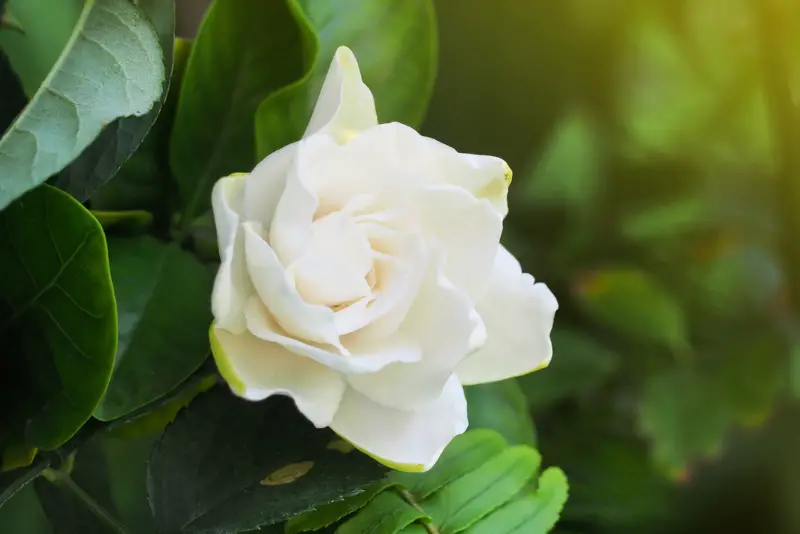
Plant gardenias in shaded areas where they do not have to compete with tree roots. Gardenias need acidic soil, and you should feed your plants regularly with fish emulsion or blood meal. The reward is that you will have beautiful blooms on this plant that grows in zones 8 to 11 throughout the year.

